
Dive Sites | Sharm el Sheikh
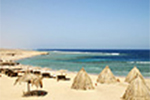
321dive is committed to providing the best value and most professional access to dive sites around the Egyptian Sinai and eastern Mediterranean.
All of the dive sites can be visited if chosen within the week, subject to sea conditions.
From beginners embarking upon their first confined dive to technical divers, from wrecks to coral gardens, from clown fish to white tipped sharks, the Red Sea has it all. Below are some of the dive sites that can be accessed from our venues.
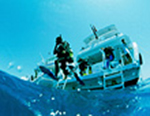
Ras Mohammed National Park
On the very tip of the Sinai, where the Gulf of Aqaba and the Gulf of Suez meet with the main body of the Red Sea, there is a high cliff wall. It is on this cliff that it is said you can see the outline of the Prophet Mohammed's face looking south over the Red Sea. This is where the Sinai's oldest National Park takes its name.
Established in 1983 the Park covers all of the land starting from the tip of the Sinai all the way north to Sharm el-Sheikh's main port, and all the waters along the coastline. There are several dive sites in the Park, which vary from steep wall dives and fast currents to mild drift dives past fabulous coral pinnacles and gardens.
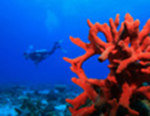
Shark and Yolanda Reef
The most famous of the National Park's dive sites is Shark and Yolanda Reef. Here, the variety of all the Parks dive sites is combined to create a dive that is hard to beat. Shark Reef is an 800m wall, with crystal blue water that, during the height of summer, is filled with thousands of schooling Snapper and Barracuda, which are hunted by marauding Sharks. It sits on the tip of the Sinai next to Yolanda Reef, which takes its name from a ship that hit the reef and sank in the early 1980s.
Around the outer edge of Yolanda is a beautiful coral garden full of vibrant soft corals and thousands of Anthias. To the west of Yolanda, in the shallows, is what remains of the ship's cargo. Toilets and bathtubs lie encrusted in corals and have become home to Giant Morays and a variety of reef fish taking shelter from the currents. Turtles can often be found feeding on soft corals.

Thomas Reef, Tiran
This is the smallest reef in the Straits of Tiran, which means that if the conditions allow, it is possible to dive all the way around it. With steep walls on all sides, made up of a variety of hard and soft corals, and fast currents running, this is an exciting dive. Below the eastern wall of the reef is a wide deep-water plateau that leads the dive north over a stunning canyon.
Swinging around onto the north and western walls the style of the reef changes from being a bright and colourful dive, to craggy walls where baby sharks and turtles are sometimes found resting in small caves.
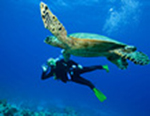
Jackson Reef, Tiran.
The Straits of Tiran are made up of four offshore reefs that climb up from the depths of the Gulf of Aqaba all the way to the surface. Described as "one of the most beauti ful places in the world", by Jacque Cousteau, Jackson Reef is the northernmost reef in the Straits. Due to its location, the southern side of Jackson is a popular location, as the northern wall is often subject to large swells.
The reef is essentially circular in shape with steep walls on all sides. To the east and west of the southern wall beautiful coral gardens can be found which are home to hawksbill turtles and a multitude of reef fish. Pelagic fish such as Snapper and Barracuda can be seen hanging in the blue and below them White-tip and Grey Reef Sharks. During the summer months it is on the northern wall that the famous Scal loped Hammerhead Sharks are seen schooling in crystal blue waters.
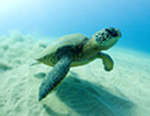
SS Thistlegorm
In the Gulf of Suez, between the reef systems of Shaid Ali and the Sinai Peninsula is where SS Thistlegorm finally came to rest. She was sunk by German bombers in World War II while she was entering the Suez Canal. The Thistlegorm was carrying supplies for the Allied troops in North Africa. Her cargo ranges from rifles to steam engines, motorbikes to airplane wings and it is this extraordinary amount of equipment that makes this dive so interesting.
The wreck sits upright on the seabed and has become home to schools of Snapper and Barracuda, and many smaller reef fish. Much of the wreck is encrusted in sponges as well as hard and soft corals. It is possible to penetrate almost all of the wreck and it is in the front two holds that much of the cargo can be found still intact. This dive is one of the best wreck dives in the world and is a must see for any wreck dive enthusiast.

The Straits of Tiran
The eastern arm of the Red Sea, which separates the Sinai from Saudi Arabia, is known as the Gulf of Aqaba.
It is a huge rift on the sea floor that plunges down thousands of meters into the deep. It is these currents that bring nutrients to corals of the four reefs, and it is the abundance of reef fish that bring in the pelagic fish such as Snappers, Tuna and Barracuda, then come the sharks. White-tip, Grey Reef, Silver-tip, Leopard, Thresher, Tiger and schooling Hammerhead sharks abound.
